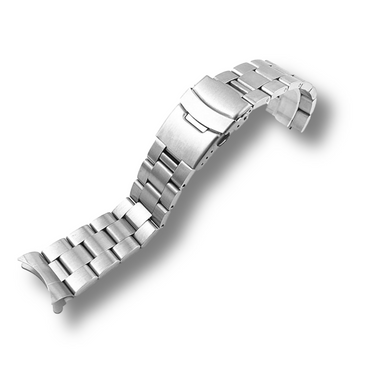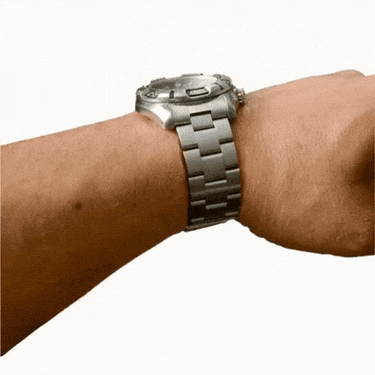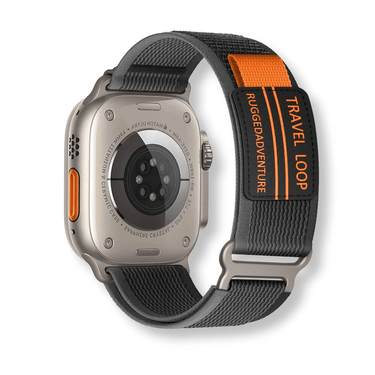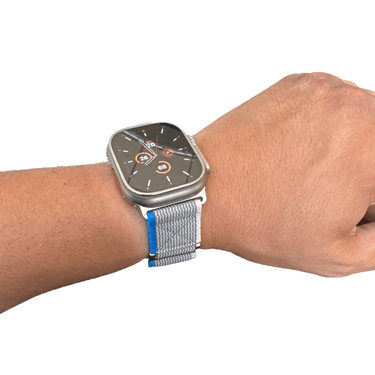DIY Watch Winder: Is it Possible?
A waste of money or a useful accessory?
If you are a watch enthusiast, you know that a watch winder is an essential accessory for automatic watches. It keeps your watch wound and ready to wear, even when not in use.
Automatic watches are designed to be worn regularly, but if they are not worn for a long time, they will stop running. Once the watch stops running, you will have to reset the time and date every time you want to wear it again.
Commercially available watch winders can be very expensive, with some high-end models costing thousands of dollars. Even mid-range models can cost hundreds of dollars.
This makes them out of reach for many people. But fear not!
There is an alternative: a DIY watch winder. With some basic tools and materials, you can create your own custom-made watch winder at a fraction of the cost.
The DIY Option
Are you tired of spending hundreds or even thousands of dollars on commercial watch winders? Do you want a more personalized and cost-effective solution?
Look no further than the DIY option. Yes, it is absolutely possible to create your own watch winder and the benefits are numerous.
Explanation that a DIY watch winder is possible
Some may argue that creating a watch winder from scratch is too difficult or requires too much technical know-how. But, with the right materials and step-by-step instructions, building your own watch winder can be a fun and fulfilling project. Plus, the satisfaction of knowing you created something useful with your own hands is unparalleled.
Don't let the fear of failure hold you back from trying. There are countless online resources and communities dedicated to DIY projects, where you can find support and guidance throughout the process.
Benefits of making your own watch winder, including cost savings and customization options
The most obvious benefit of building your own watch winder is saving money. Commercial options can range from a few hundred to several thousand dollars depending on features and quality. By sourcing your own materials and putting in some labor, you could potentially save hundreds or even thousands of dollars.
In addition to cost savings, creating your own watch winder allows for complete customization. You can choose specific materials to fit your personal style or design it specifically for certain watches in your collection.
Plus, if any issues arise down the line, you have the knowledge and ability to fix it yourself rather than paying for repairs or replacements. The satisfaction of building something useful with your own two hands coupled with the cost savings and customization options make creating a DIY watch winder an appealing option for many watch enthusiasts.
Materials Needed
Motor
When it comes to building a DIY watch winder, the most important component is the motor. The motor is responsible for providing the necessary rotation to keep the watch wound and functioning properly. I recommend using a high-torque DC gear motor with a low RPM rate for optimal performance.
Don't waste your time with cheap motors that will burn out quickly or provide inconsistent rotations. Invest in a quality motor and save yourself from frustration down the line.
Power Supply
The power supply is another crucial component of your DIY watch winder. You'll need a stable source of power to keep the motor running, so don't skimp on this part.
A reliable DC power supply is ideal, with an output voltage that matches your chosen motor's rated voltage and current capacity. I recommend choosing a power supply with overload protection to prevent any damage to your system in case something goes wrong.
Watch Holder
You'll need a sturdy and secure watch holder to keep your timepiece in place during winding. Depending on the size and shape of your watch, you may choose different types of holders such as clips or cushions.
I recommend selecting one that provides ample support for the watch while allowing easy access for removal and adjustment. Building a DIY watch winder requires specific components that are critical to its functionality.
Don't cut corners when it comes to choosing high-quality materials such as motors, power supplies, and watch holders - it will save you time and money in the long run. Remember that investing in quality components will give you more control over how your DIY project turns out and ensure optimal performance over time compared to using mediocre parts that may lead to problems down the road
Building the Watch Winder
Step-by-step Instructions
Now that you have gathered all the necessary materials, it is time to build your DIY watch winder. The first step is to mount the motor onto a sturdy base, preferably made out of wood to ensure stability.
Next, wire the motor to a power supply and attach a switch for easy on and off control. Once the motor is properly secured and wired, it's time to attach the watch holder.
This can be done using a variety of materials such as PVC pipe or wooden dowels. Make sure that the watch holder is lined up with the center of rotation for optimal winding.
After mounting everything together, test your watch winder by plugging in your power source and switching it on. Make sure that everything rotates smoothly and consistently with proper rotation speed.
Tips for Ensuring Proper Rotation Speed and Direction
One of the most important aspects of building an effective watch winder is ensuring proper rotation speed and direction. The ideal rotation speed varies by watch brand, so make sure to research your particular model beforehand. To adjust rotation direction, simply reverse the polarity of one of the motor wires using a switch or changing its position on your wiring board.
Additionally, you should consider using a programmable timer or microcontroller to ensure consistent winding intervals throughout each day- this ensures maximum efficiency while reducing unnecessary wear-and-tear on both your watches and your DIY winder. Following these guidelines will help you create an effective DIY watch winder that can keep your watches running smoothly at an affordable price- without spending hundreds (or even thousands) of dollars on a commercial product!
Customization Options
Suggestions for Customizing the DIY Watch Winder to Fit Personal Style or Specific Watches
One of the greatest benefits of making your own watch winder is the ability to customize it to fit your personal style or specific watches. Whether you're a minimalistic person who prefers sleek monochrome designs, or someone who loves bold patterns and bright colors, there are countless ways to make your watch winder truly unique.
Consider adding a personalized touch by painting the exterior of the box with a favorite color or design. You could also add a custom emblem or logo to make it uniquely yours.
Another way to make your watch winder stand out is by customizing the watch holder itself. For example, you could create a 3D-printed holder that's shaped like an animal or object that's meaningful to you.
If you have multiple watches with different sizes, consider making adjustable watch holders that can accommodate different types of watches. This will ensure that all of your timepieces are well secured and can be used interchangeably in the same watch winder.
Examples of Creative Designs or Materials That Can Be Used
When it comes to creating a DIY watch winder, there are no limits on the materials and designs you can use. You may choose traditional wood and metal materials for a classic look, but don't be afraid to explore other options such as acrylic glass or even recycled materials like old vinyl records. Another creative idea is adding LED lights inside the box so you can admire your timepiece as it rotates.
Or why not incorporate an LCD display screen that shows information about each individual watch such as model number and date last serviced? The possibilities are endless!
If you're feeling adventurous, try incorporating tech elements such as Bluetooth sensors that allow for remote control via smartphone app. You could also use solar panels as an alternative energy source to power the motor.
The more adventurous you get, the more unique your watch winder will be! Building a DIY watch winder allows for endless customization options that can fit your personality and specific watches.
From customizing with colors and patterns to creating adjustable watch holders and incorporating tech elements, there's no limit to what you can do. Get creative, let your imagination run wild, and make a truly one-of-a-kind accessory that will keep your prized possessions wound up perfectly every time!
Maintenance
Importance of Regular Maintenance to Ensure Proper Function
Let's face it, folks - if you're going to invest the time and effort into building your own DIY watch winder, you'd darn well better take care of it. Neglecting proper maintenance is a surefire way to sabotage all your hard work and end up with a costly paperweight instead of a functional device. Regular maintenance is important for any mechanical device, and watch winders are no exception.
The moving parts need to be inspected regularly for wear and tear, and cleaned and lubricated as necessary. Failure to do so can result in decreased performance or even permanent damage over time.
So, do yourself a favor and make sure you set aside some time for proper maintenance on your DIY watch winder. Trust me, it'll save you a lot of headaches (and potentially expensive repairs) down the road.
Tips for Cleaning and Lubricating the Motor
Cleaning and lubricating the motor is an essential part of maintaining your DIY watch winder. It may seem like a daunting task at first, but with the right tools and some patience, it's actually quite simple.
First off, make sure you have the right type of lubricant for your motor - using the wrong type can actually do more harm than good. Silicone-based lubricants are usually recommended for watch winders.
Next, remove any debris or dust from around the motor using compressed air or a soft-bristled brush. Then apply a small amount of lubricant directly onto the motor shaft (avoiding other parts such as gears) before rotating it manually with your fingers to ensure even distribution.
Wipe away any excess oil with a clean cloth before reassembling your winder. Remember: maintaining your DIY watch winder doesn't have to be difficult or time-consuming - just make sure you do it properly and on a regular basis to keep your winder in top shape for years to come.
Conclusion
Now that you've reached the end of this article, it should be clear that building a DIY watch winder is not only possible, but also a great option for anyone who wants to save money and have more control over their watch-winding experience. With a few basic materials and some determination, you can create your own customized watch winder that will keep your collection running smoothly. The benefits of a DIY watch winder are numerous.
Not only will you save hundreds or even thousands of dollars compared to buying a commercial model, but you'll also have the satisfaction of creating something yourself. Whether you're an experienced builder or just getting started with DIY projects, building a watch winder is a fun and rewarding challenge that will pay dividends for years to come.
So what are you waiting for? If you're tired of winding your watches by hand or shelling out big bucks for commercial winders, it's time to take matters into your own hands.
Follow the steps outlined in this article and start building your own DIY watch winder today. You won't regret it!

























